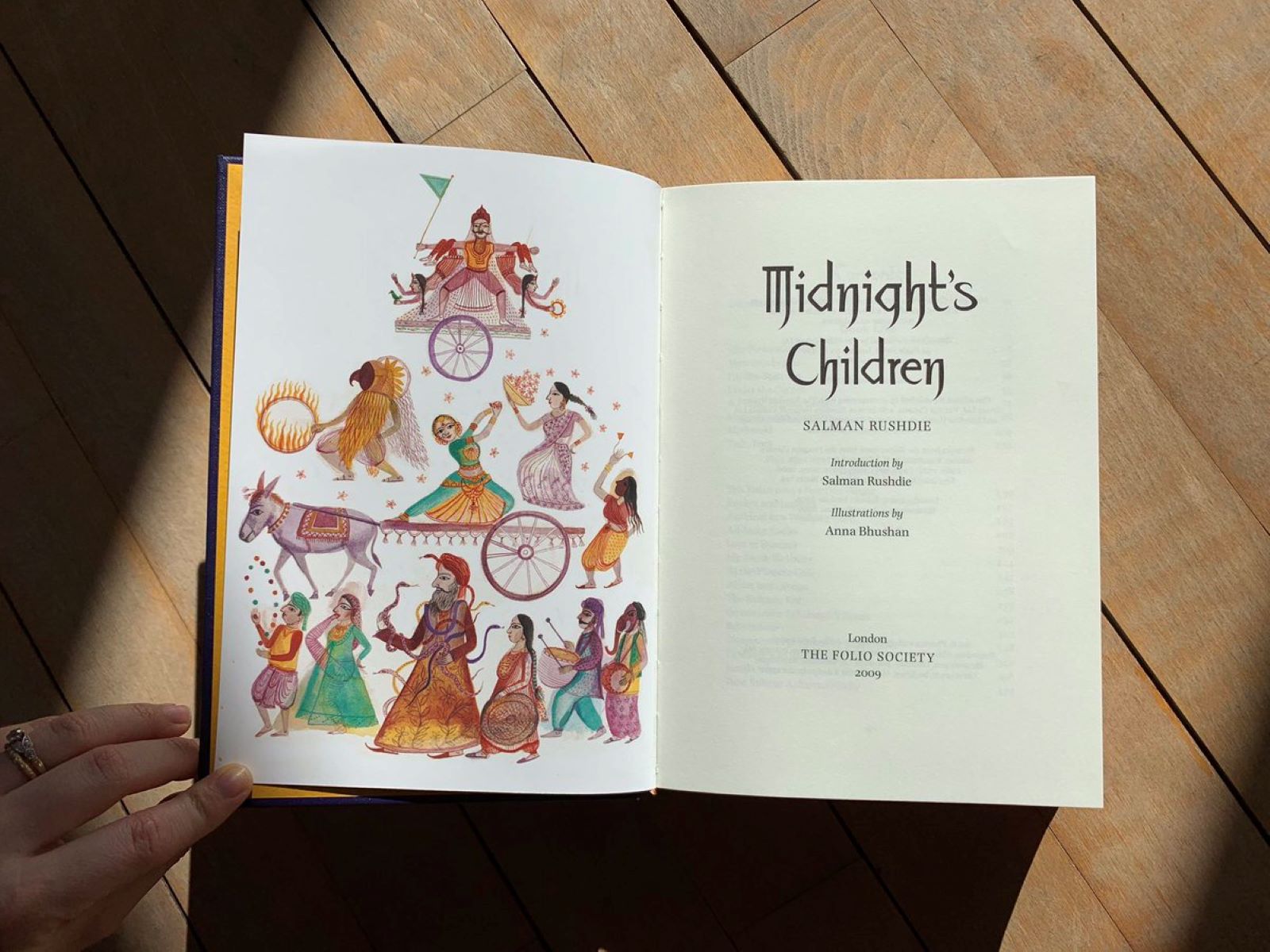
Salman Rushdie’s iconic novel, Midnight’s Children, has captivated readers since its publication in 1981. The book tells the extraordinary story of Saleem Sinai, a boy born at the stroke of midnight on the day of India’s independence, who discovers that he possesses magical powers that connect him to the other “midnight’s children” born during that fateful hour.
While many are familiar with the general premise of the novel, there are several surprising facts about Midnight’s Children that even avid fans may not know. From its historical influences to its controversial reception, these lesser-known aspects shed light on the depth and significance of Rushdie’s work.
In this article, we will delve into 12 surprising facts about Midnight’s Children, unveiling hidden insights and intriguing details that enrich our appreciation for this landmark piece of literature.
Key Takeaways:
- “Midnight’s Children” by Salman Rushdie is a captivating blend of history and magical realism, exploring themes of identity and postcolonial experience, making it a must-read for anyone interested in rich storytelling and profound insights.
- Salman Rushdie’s “Midnight’s Children” won the Booker Prize, faced controversies, and has been translated into numerous languages, showcasing the author’s unique writing style and enduring relevance in literature.
Midnight’s Children was published in 1981.
Salman Rushdie’s groundbreaking novel, Midnight’s Children, was first published in This epic work of literature captivated readers with its mesmerizing storytelling and intricate narrative structure.
The novel won the Booker Prize.
In 1981, Midnight’s Children received the prestigious Booker Prize, establishing Salman Rushdie as one of the most celebrated authors of his time. The book’s innovative blend of history, magical realism, and social commentary impressed the judges and captured the imagination of readers around the world.
It is considered a seminal work of postcolonial literature.
Midnight’s Children is often hailed as a seminal work of postcolonial literature. Through the perspective of its protagonist Saleem Sinai, Rushdie explores themes of identity, history, and the complex relationship between India and its colonizers. The novel’s rich and layered narrative offers profound insights into the postcolonial experience.
The story is set against the backdrop of India’s independence.
Set against the backdrop of India’s independence from British rule in 1947, Midnight’s Children delves into the tumultuous political and social changes that shaped the nation. The characters in the novel are born at the exact moment of India’s independence, their lives intertwined with the destiny of the nation itself.
Midnight’s Children is considered a work of magical realism.
Rushdie’s blending of historical events with magical elements has led to the categorization of Midnight’s Children as a work of magical realism. The story is filled with fantastical elements, such as children endowed with extraordinary powers and a telepathic connection between them.
The novel explores the concept of personal and national identity.
A central theme in Midnight’s Children is the exploration of identity, both on a personal and national level. The characters in the novel grapple with questions of self-discovery, belonging, and the search for meaning amidst a rapidly changing society.
It has been adapted into a feature film.
In 2012, Midnight’s Children was adapted into a feature film directed by Deepa Mehta. This cinematic adaptation brought the story to life on the big screen, allowing a wider audience to experience the magic and depth of Rushdie’s novel.
Salman Rushdie was inspired by his own family history.
Rushdie drew inspiration from his own family’s history while writing Midnight’s Children. The novel incorporates elements of his own experiences and ancestry, adding a personal touch to the story and making it even more poignant.
Its publication faced controversies and challenges.
Upon its release, Midnight’s Children faced controversies and challenges, particularly from certain factions that deemed the book offensive or blasphemous. The novel’s provocative themes and unflinching exploration of sensitive subjects sparked intense debates and discussions.
It remains one of Rushdie’s most acclaimed works.
Even decades after its release, Midnight’s Children continues to be hailed as one of Rushdie’s most acclaimed works. Its impact on literature and its enduring relevance make it a must-read for anyone interested in exploring the complexities of postcolonialism and identity.
Midnight’s Children has been translated into numerous languages.
The global reach of Midnight’s Children is evident in its translations into numerous languages. The novel has been made accessible to readers worldwide, allowing its powerful message and captivating storytelling to transcend cultural and linguistic boundaries.
It showcases Salman Rushdie’s unique writing style.
Midnight’s Children showcases Salman Rushdie’s unique and masterful writing style. His use of vivid language, intricate storytelling techniques, and the skillful interweaving of history and fantasy have made this novel a literary masterpiece.
Conclusion
In conclusion, “Midnight’s Children” by Salman Rushdie is a captivating novel that delves into the complexities of identity, history, and destiny. Through the story of Saleem Sinai and his fellow “midnight’s children,” Rushdie weaves a rich tapestry of magical realism, political turmoil, and personal transformation. The novel’s unique narrative style, coupled with its thought-provoking themes, makes it a must-read for fans of literary fiction.
FAQs
1. What is the significance of the title “Midnight’s Children”?
The title “Midnight’s Children” refers to the children who were born at the stroke of midnight on India’s independence day. They are believed to possess special powers and a connection to the destiny of the nation.
2. Is “Midnight’s Children” based on real events?
While the novel incorporates historical events and political upheavals, it is a work of fiction. The characters and their experiences are imagined, although they are shaped by the socio-political context of India’s history.
3. What makes “Midnight’s Children” unique?
One of the unique aspects of the novel is its blend of magical realism and historical fiction. Rushdie’s writing style, characterized by vivid imagery and imaginative storytelling, sets it apart and creates a mesmerizing reading experience.
4. Is “Midnight’s Children” suitable for all readers?
While the novel has garnered critical acclaim and a wide readership, it contains mature themes and complex narrative techniques. Some readers may find it challenging due to its length and intricate storytelling.
5. Should I read other works by Salman Rushdie before reading “Midnight’s Children”?
No prior knowledge of Rushdie’s work is necessary to enjoy “Midnight’s Children.” It can be read as a standalone novel, although exploring his other works may enhance your understanding of his writing style and recurring themes.
If you're captivated by the brilliance of Salman Rushdie's Midnight's Children, why not explore more fascinating facts about this literary giant himself? Discover the magical realism that defines another masterpiece, One Hundred Years of Solitude by Gabriel García Márquez. And for those intrigued by award-winning literature, don't miss the compelling insights surrounding Arundhati Roy's Booker Prize-winning novel, The God of Small Things.
Was this page helpful?
Our commitment to delivering trustworthy and engaging content is at the heart of what we do. Each fact on our site is contributed by real users like you, bringing a wealth of diverse insights and information. To ensure the highest standards of accuracy and reliability, our dedicated editors meticulously review each submission. This process guarantees that the facts we share are not only fascinating but also credible. Trust in our commitment to quality and authenticity as you explore and learn with us.


